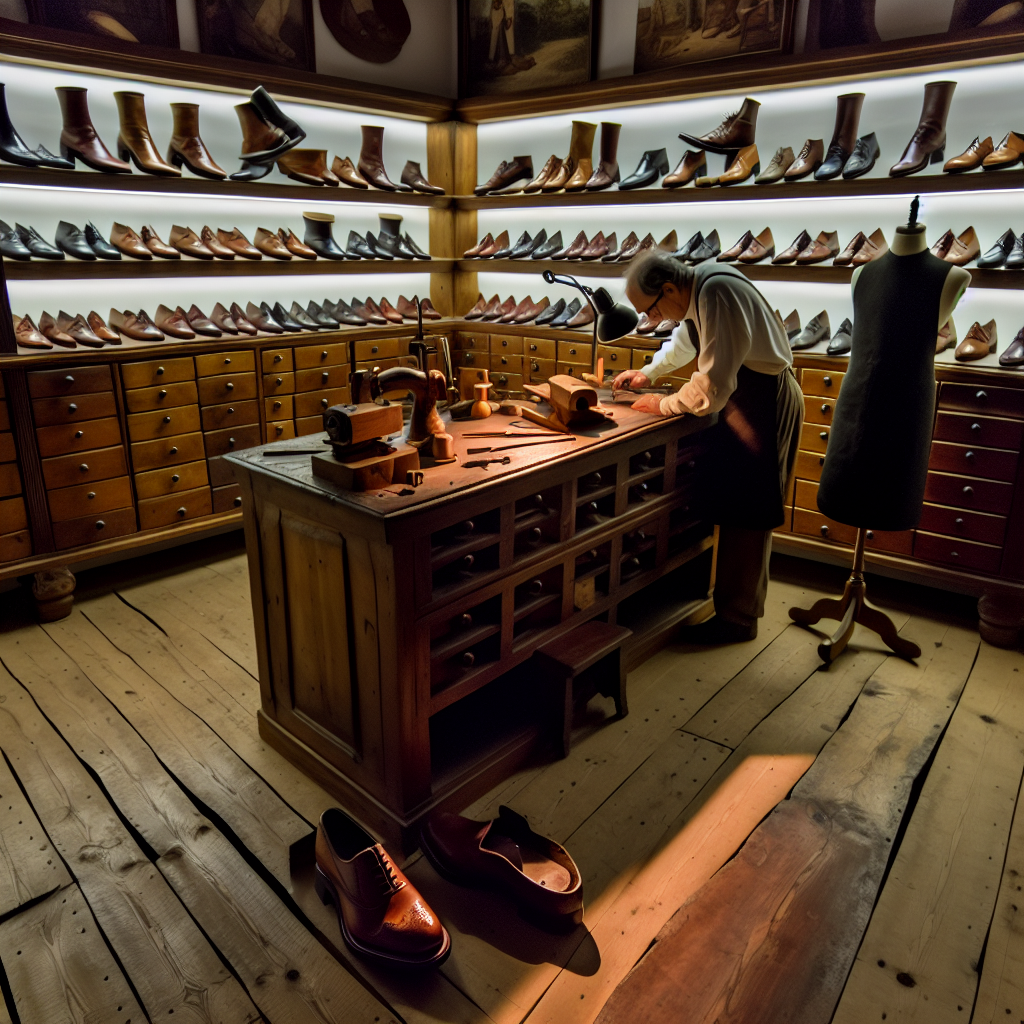Bespoke Shoe Archives: Inside the World’s Finest Cordwainers
Introduction
Luxury is often defined by uniqueness, and nothing exemplifies this more than bespoke footwear. Handcrafted to perfection, bespoke shoes are not just accessories—they are masterpieces of artisan craftsmanship, seamlessly melding history, heritage, and innovation. The world’s finest cordwainers dedicate their lives to the pursuit of footwear excellence, shaping and sculpting leather into unrivaled sartorial expressions of personal style.
The term “cordwainer” originates from the Old French word *cordonnier*, referring to artisans who manufacture high-quality shoes from premium leather. Unlike cobblers, who primarily repair shoes, cordwainers are master shoemakers, specializing in building bespoke footwear from scratch. A pair of bespoke shoes can take anywhere from 50 to 100 hours to complete, requiring multiple fittings, precision measurements, and meticulous attention to detail.
What sets bespoke shoes apart from off-the-rack luxury brands is their unparalleled construction, customized fit, and hand-stitched detailing. Each bespoke shoe begins with a painstaking process that includes crafting a last (a wooden mold tailored to a client’s exact foot shape), selecting the finest leather, and employing time-honored techniques such as hand-welting and Goodyear welting to ensure longevity. The result? Shoes that not only exude sophistication but also provide unmatched comfort and durability.
Renowned cordwainers such as John Lobb, George Cleverley, Stefano Bemer, and Berluti have built legacies rooted in bespoke craftsmanship. The tradition of bespoke shoemaking isn’t just about luxury—it’s about preserving an art form that prioritizes quality over mass production. In an era of fast fashion and generic designs, bespoke footwear remains the pinnacle of luxury, appealing to connoisseurs who value excellence over expedience.
Beyond aesthetics, bespoke footwear also promotes foot health and posture alignment. A perfectly crafted shoe eliminates pressure points, supports natural foot movement, and provides balance—benefits that medical professionals often advocate for. This article delves further into the world of bespoke shoes, exploring the craftsmanship involved, the medical advantages, and why investing in bespoke footwear is the ultimate symbol of lavish living.
The Art of Bespoke Shoemaking: A Fusion of Tradition and Precision
Each pair of handcrafted bespoke shoes is a testament to centuries-old craftsmanship, requiring an intricate multi-step process. The journey to creating a singular pair of shoes begins with precise foot measurements, ensuring every detail—arch height, toe shape, and heel width—is analyzed for a flawless fit. The creation of a personal last, a custom wooden mold of the client’s foot, allows cordwainers to sculpt the shoe around an accurate three-dimensional representation.
Material selection is pivotal in determining the final product’s quality. Only the finest full-grain leathers, sourced from revered tanneries in France, Italy, and the United Kingdom, are used, ensuring supple but durable footwear. The stitching alone speaks volumes—many bespoke shoemakers use hand-welting, a method superior to industrial gluing techniques, because it increases flexibility and strengthens shoe longevity.
A crucial part of the bespoke process is the trial-fitting stage, sometimes referred to as the “basted fitting.” Here, a prototype shoe is crafted for the client to test the initial structure and comfort. Adjustments are made, from minor width refinements to redistribution of pressure points. Once the final shape is perfected, hand-finishing techniques such as burnishing, antiquing, and patina application are applied, ensuring each shoe reflects the wearer’s personal aesthetic.
More Than Just Style: The Medical Benefits of Bespoke Footwear
Beyond their opulence, bespoke shoes possess medical advantages that make them a sensible investment for long-term foot health. According to the American Podiatric Medical Association (APMA), improper footwear can cause significant foot ailments, including bunions, callouses, and chronic back pain. A 2022 study published in the *Journal of Foot and Ankle Research* revealed that ill-fitting shoes lead to posture misalignment, affecting spinal health and gait efficiency [[1]](https://jfootankleres.biomedcentral.com/articles/10.1186/s13047-022-00498-3).
Bespoke footwear counters these risks by offering a tailor-made fit that supports the foot’s natural contours rather than constraining them. Custom arch support is particularly beneficial for individuals with high or flat arches, combatting discomfort associated with overpronation or supination. Orthopedic specialists often endorse bespoke footwear for patients with diabetic neuropathy, arthritis, or plantar fasciitis because these shoes reduce pressure points and enhance circulation.
Furthermore, a study conducted by *The Journal of Orthopaedic & Sports Physical Therapy* underscores how custom-made shoes improve kinetic movement and alleviate joint pain [[2]](https://www.jospt.org/doi/full/10.2519/jospt.2021.10501). With luxury brands prioritizing aesthetics over function, bespoke shoemakers bridge the gap by delivering both style and biomechanical excellence.
Conclusion: Why Bespoke Shoes Define True Luxury
Bespoke shoes transcend mere luxury—they are investments in craftsmanship, health, and individuality. The world’s greatest cordwainers safeguard the legacy of artisanal shoemaking, crafting footwear that is as functional as it is beautiful. A bespoke pair is not just an accessory but a personal expression of refinement, unparalleled comfort, and exclusivity. Those who embrace the bespoke experience enter a realm where elegance meets practicality, proving that true luxury is not just about appearance—it’s about exceptional quality, comfort, and longevity.
Summary:
Bespoke shoes are the pinnacle of luxury, representing a fusion of tradition and precision in artisanal shoemaking. Crafted by master cordwainers, these handmade masterpieces not only exude sophistication but also offer unparalleled comfort and medical benefits, making them a sensible investment in one’s foot health and personal style.
References:
1. *Journal of Foot and Ankle Research* – “The Impact of Poorly Fitted Footwear on Gait and Posture Alignment” [[Link]](https://jfootankleres.biomedcentral.com/articles/10.1186/s13047-022-00498-3)
2. *The Journal of Orthopaedic & Sports Physical Therapy* – “Biomechanical Benefits of Custom Footwear in Joint Mobilization” [[Link]](https://www.jospt.org/doi/full/10.2519/jospt.2021.10501)

Dominic E. is a passionate filmmaker navigating the exciting intersection of art and science. By day, he delves into the complexities of the human body as a full-time medical writer, meticulously translating intricate medical concepts into accessible and engaging narratives. By night, he explores the boundless realm of cinematic storytelling, crafting narratives that evoke emotion and challenge perspectives. Film Student and Full-time Medical Writer for ContentVendor.com




